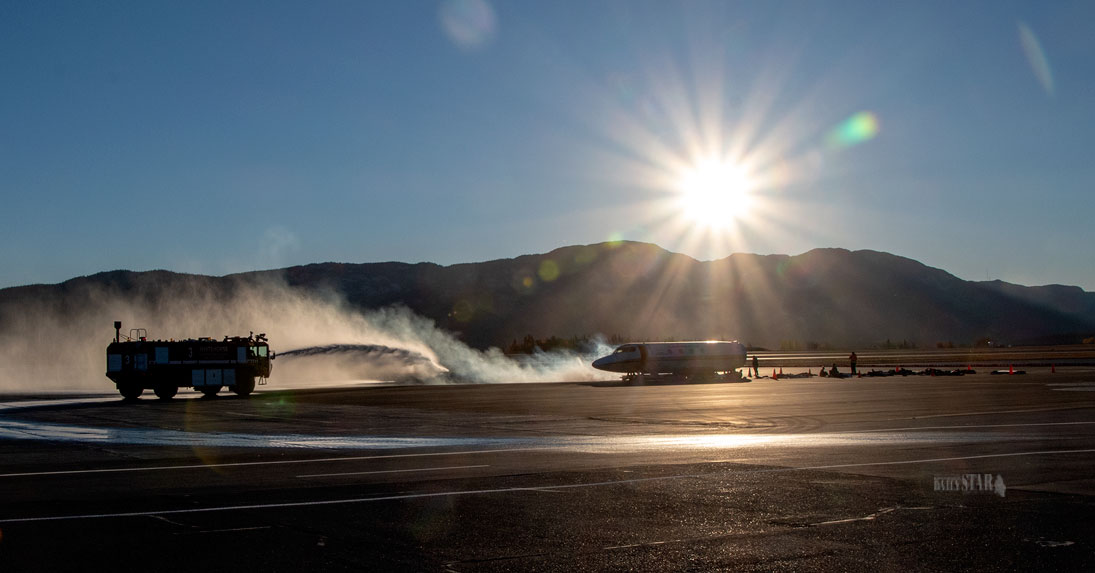
Photo by Vince Fedoroff
FIGHTING THE FLAMES – A fire truck douses the aircraft during Tuesday’s simulated disaster at the Erik Nielsen Whitehorse International Airport.

Photo by Vince Fedoroff
FIGHTING THE FLAMES – A fire truck douses the aircraft during Tuesday’s simulated disaster at the Erik Nielsen Whitehorse International Airport.
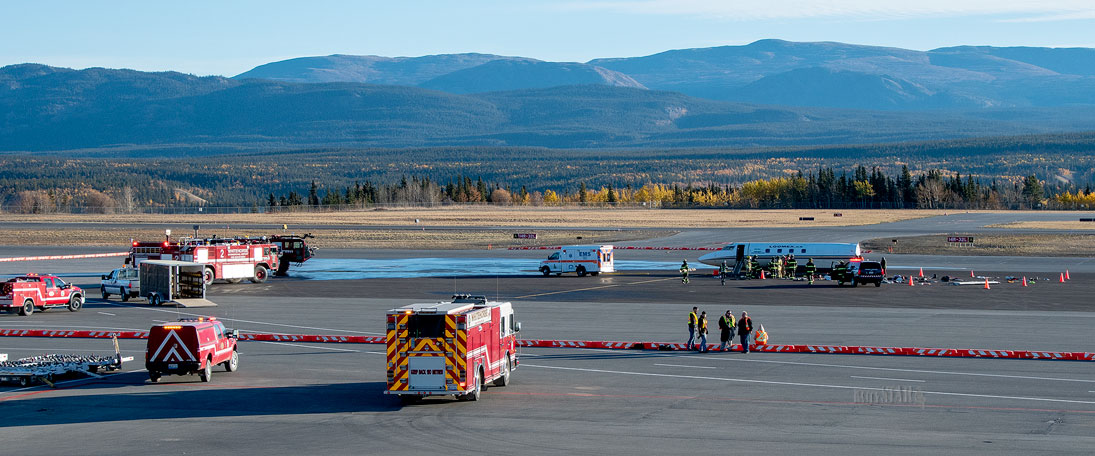
Photo by Vince Fedoroff
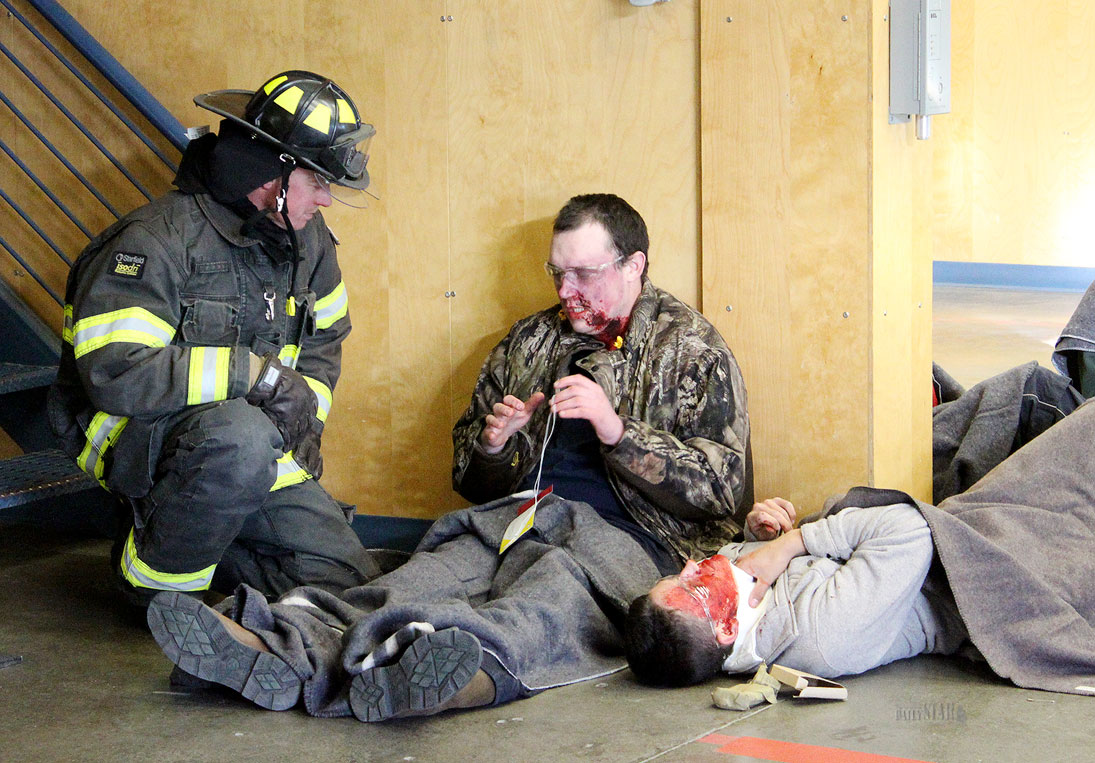
Photo by Gord Fortin
TRAUMATIC EXPERIENCE – A passenger trembles as he speaks with a firefighter.
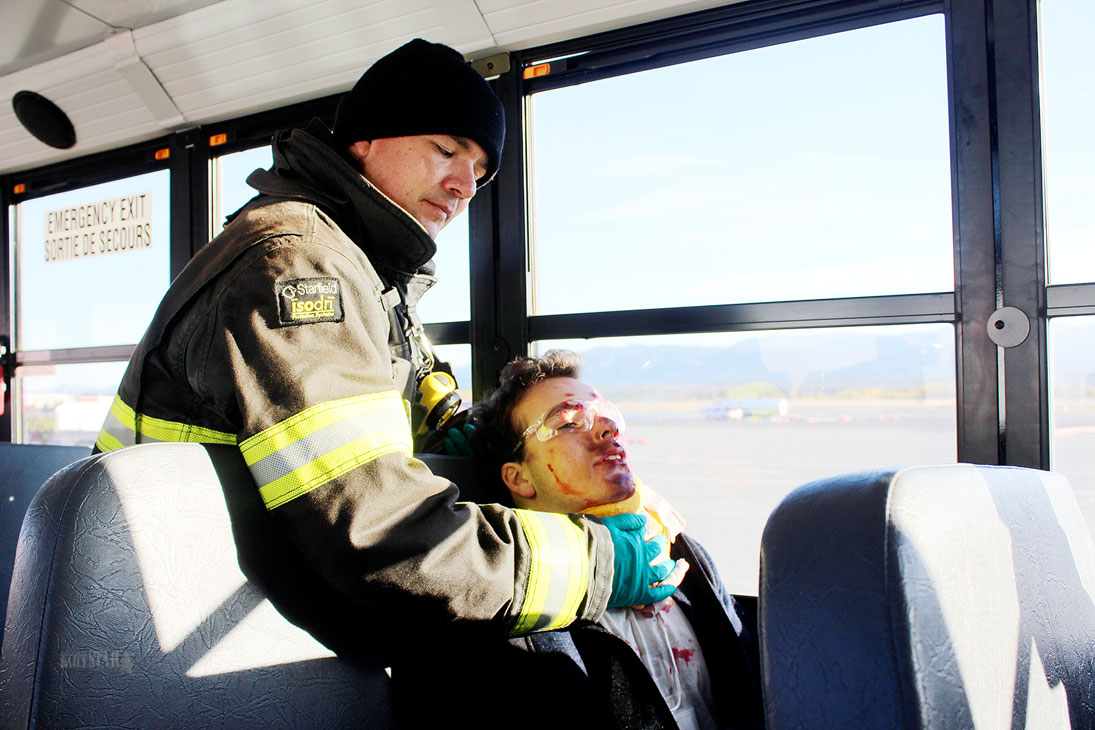
Photo by Gord Fortin
ATTENDING TO THE INJURED – A firefighter applies pressure to a passenger’s wound during the simulated plane crash.
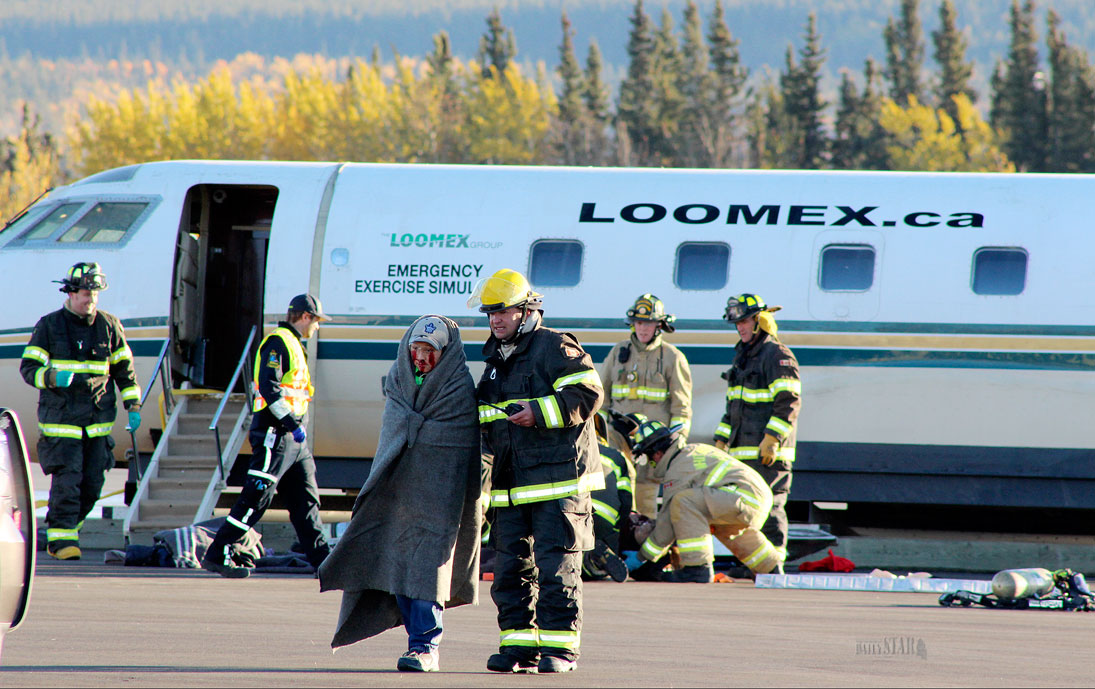
Photo by Gord Fortin
HELP AT HAND – A passenger wrapped in a blanket is moved to the triage area.
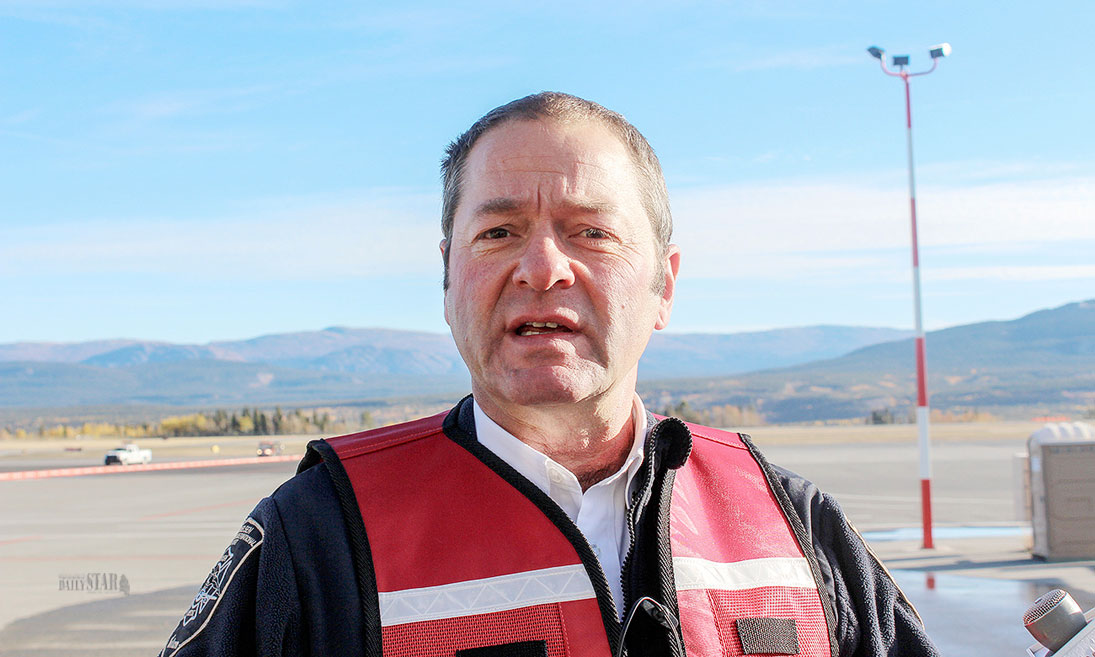
Photo by Whitehorse Star
Airport Fire Chief Doug Burgess
Whitehorse and Yukon emergency personnel participated in an emergency response exercise Tuesday at the Erik Nielsen Whitehorse International Airport.
Whitehorse and Yukon emergency personnel participated in an emergency response exercise Tuesday at the Erik Nielsen Whitehorse International Airport.
Airport fire chief Doug Burgess said the exercise was a simulated crashed plane. Emergency personnel were operating as if the aircraft diverted here because of a sick passenger, but crashed during the landing.
Several agencies participated or helped organize the simulation. They included the Whitehorse Fire Department, the airport rescue and fire service, volunteer fire departments, Yukon Wildland Fire Management, Nav Canada, and the Loomex Group.
Also involved were the Emergency Measures Organization, the RCMP, EMS, the Yukon coroner, the Yukon Hospital Corp. and the Canadian Border Service Agency.
Cadets from the Whitehorse Lions Royal Canadian Air Cadet Squadron and the Yukon Regiment Army Cadet Corps played the 62 passengers.
The cadets were asked to simulate injuries, and some acted as casualties of the accident.
Burgess said it was critical to perform this exercise with people playing the victims.
“It’s very important to have real people so you get a sense of what it’s like to triage that amount of people,” he said.
All passengers were prioritized based on their injuries. The first responders worked on a colour system for categorizing the injured.
There were four categories. Black meant a casualty. The injuries were marked either red, yellow or green based on their severity.
After being triaged, the first responders simulated transporting the injured to the hospital.
The cadets were loaded onto a school bus.
Burgess highlighted some of the issues he found. He said transportation was one because there are a finite number of ambulances in the territory.
Not all of them could be called in for this exercise, as some must remain available for emergencies.
This creates a bottleneck, Burgess said. To mitigate this problem, the airport fire department is working with other agencies to develop a better plan on transporting a large number of people. Communication could be improved, he added.
As for what went well, Burgess said everyone performed their duties.
“People were here, they did their jobs that they’ve been trained for and they got an opportunity to work shoulder to shoulder,” he said.
First responders are required to do this test on a biannual basis. Burgess said incidents where police, firefighters and ambulance are legitimately called to the airport also meet the requirement.
Aviation accidents don’t happen often, he noted, but first responders need to be ready for it. Accidents are a chaotic scene. He hopes the training can act as a means for first responders to put a template on chaos.
“If you can do that in any kind of timely manner, you’re ahead of the race,” he said.
In order to encourage thoughtful and responsible discussion, website comments will not be visible until a moderator approves them. Please add comments judiciously and refrain from maligning any individual or institution. Read about our user comment and privacy policies.
Your name and email address are required before your comment is posted. Otherwise, your comment will not be posted.
Comments (1)
Up 3 Down 1
Groucho d'North on Oct 6, 2018 at 9:58 am
Kudos to all involved in conducting this practice round, as all we former boy scouts learned, its better to be prepared.
I am curious though, how many empty hospital beds were there at the time of the exercise, and how many injured persons were sent to the hospital for treatment? We often hear that there is no room in the hospital so it begs the question, how will the injured be treated efficiently if such a incident was to occur? Also the scenario was set at the airport, what if the same plane went down on approach and came to earth say in the bush behind the Whitehorse Copper mine site? Again, kudos to all involved in this planning.